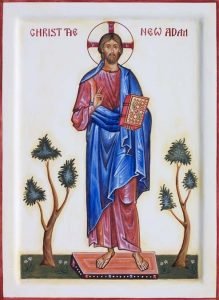 In thinking about what the Fathers of the Church have contributed to our understanding of the Christian faith, it is obvious that error or heresy can often spur one to seek the truth. Heresy has often performed this troubling function in the Church. Surely faulty teaching prodded the Church to understand Christ more clearly, both in His deity and humanity.
In thinking about what the Fathers of the Church have contributed to our understanding of the Christian faith, it is obvious that error or heresy can often spur one to seek the truth. Heresy has often performed this troubling function in the Church. Surely faulty teaching prodded the Church to understand Christ more clearly, both in His deity and humanity.
Exactly what is heresy? Tertullian, writing in the early third century CE, argued that heresy could be identified by its divergence from apostolic teaching and doctrine. He describes a distinct paradigm of revelation and authority. First, Jesus in his earthly ministry “declared what He was, what He had been, what was the Father’s will which He was carrying out, what was the conduct He laid down for humankind: all this He declared either openly to the people, privately to the disciples or through His personal example.
Second, Tertullian explains that Jesus “chose twelve leading ones to be his close companions, appointed as leaders of the nations.” We must always remember that Israel was made-up of twelve tribes. These men proceeded to plant churches through the Mediterranean basin and in doing so “published the same doctrine of the same faith.” While this is true, the doctrine that they planted was not as highly organized and explained as it is now. They preached Jesus Crucified and focused on bringing people to a true relationship with Him. The churches, founded by apostles who had, in turn, been selected by Jesus either directly or indirectly (we must remember that Paul was selected by Jesus through a vision and by connecting him with followers of Jesus) were His authoritative representatives and interpreters, were all part of one connected plant or vine. Indeed, Tertullian contends newer churches “borrowed the shoot of faith and the seeds of doctrine” from those previously planted. It is this sharedseed, of a common apostolic life and doctrine, that identifies a church as “apostolic, as being the offspring of apostolic churches. Every kind of thing must needs be classed with its origin. And so the churches, many and great as they are, are identical with that one primitive Church issuing from the Apostles, for thence they are all derived. So all are primitive and all apostolic, while all are one. One of the signs of the true Church is, of course, apostolic succession – tracing leadership back to the Apostles.
